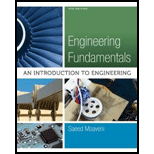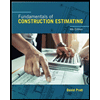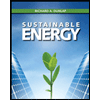
Concept explainers
Investigate the operation of various turbines and explain the operation of steam turbines, hydraulic turbines, gas turbines, and wind turbines.
Explanation of Solution
Turbine:
A turbine is also known as rotary engine that transforms the rotational energy from a fluid or air into a usable energy or work.
The turbine contains a generator, a shaft, and blades. The blade act as a barrier for fluid or air, when the blade moves the energy from the water or air is transferred to the rotor. When the rotor starts to rotate the shaft also rotates and transforms the
Impulse turbine:
Impulse turbine changes the flow path of high velocity fluid. The turbine spins and leaves the kinetic energy from the fluid flow as a result of the impulse. The pressure of the blades does not alter. The total pressure drop takes place in the stationary blades for the steam or gas turbine. The stationary blades is the part which takes place the total pressure drop in the steam or gas turbine.
The fluid pressure head is reformed to velocity head by accelerating the fluid with a nozzle. No pressure casement is required for impulse turbine. The Pelton wheels use the impulse turbine concept exclusively.
Reaction turbine:
The reaction turbine functions are based on the Newton’s third law of motion. The torque developed due to the turbine response to the fluid pressure. The pressure casement is essential for the turbine.
The turbine nozzles are united to the rotor. The Francis turbine and steam turbines are use the concept of reaction turbine. When the fluid leaving through the nozzles, it produces a reaction force on the pipes due to acceleration of fluid. It causes the rotor to change in the direction against to the direction of fluid. Steam turbines and Francis turbine are used by the concept of reaction turbine.
Operation of steam turbine:
The higher amount of mechanical power is produced by the steam turbine applying the less amount of steam. The wheels and blades are attached to the steam turbine rotor. The turbine blade extracts the energy from the steam. It is meant for the electricity production in the thermal power plants. The primary type of steam turbine is the condensing steam turbine.
Operation of hydraulic turbine:
The hydraulic turbine transforms the kinetic energy of the falling water into mechanical energy of rotation. It is used in hydraulic power plants. The modern hydraulic turbines are a form of fluid dynamic machinery of the jet and vane type operating on the principle of impulse or reaction turbine.
Operation of gas turbine:
In gas turbine the air is used as a working fluid. It contains three main components they are downstream turbine on the shaft, upstream rotating gas compressor, and a combustion chamber in the midst of the compressor and the shaft.
The compressor pulls the air into the engine, and push in to the ‘combustion chamber’. It creates the larger amount of pressure and temperature and expands through the turbine section, then the electricity has produced owing to the spinning of generator.
Operation of wind turbine:
Wind turbine works on the principle by which the wind is used to generate mechanical power or electricity. The propellers or blades get rotation while the wind energy strikes on the blades around the rotor. The shaft is connected with rotor and it induce the generator to produce electricity.
Conclusion:
Thus, the operation of steam turbines, hydraulic turbines, gas turbines, and wind turbines is explained.
Want to see more full solutions like this?
Chapter 4 Solutions
Engineering Fundamentals: An Introduction to Engineering (MindTap Course List)
- For question 2 do 2% please. Use El centro spectrum to answer the secon question please. Thank you for your help!arrow_forwardsolve pleasearrow_forwardA mechanism for pushing small boxes from an assembly line onto a conveyor belt is shown with arm OD and crank CB in their vertical positions. For the configuration shown, crank CB has a constant clockwise angular velocity of 0.6π rad/s. Determine the acceleration QE of E (positive if to the right, negative if down). 450 mm 215 mm 565 mm A 185 mm 105 mm 110185. mm mm Answer: a = i B 40 mm E m/s²arrow_forward
- Please answer the following questions in the picture, use the second picture to answer some of the questions. I appreciate your help! Explain step by step, thank you!arrow_forwardQuestion 5. Three pipes A, B, and C are interconnected as in Fig. 2. The pipe characteristics are given below. Find the rate at which water will flow in each pipe. Find also the pressure at point P. (Neglect minor losses) Pipe D (in) L (ft) f A 6 2000 0.020 B 4 1600 0.032 C 8 3000 0.02 -El. 200 ft P -El. 120 ft B Fig. 2 -El. 50 ft.arrow_forwardcalculate all nodal displacementts and all the member forces of the trussarrow_forward
- NOTE: Use areal methods only for V,M,N diagrams(Do NOT use the equations) (also draw the N diagram(s) for the entire structure)arrow_forwardThe figure below shows a foundation of 10 ft x 6.25 ft resting on a sand deposit. The net load per unit area at the level of the foundation, qo, is 2100 lb/ft². For the sand, μs = 0.3, E, = 3200 lb/in.², Dƒ = 2.5 ft, and H = 32 ft. Foundation BX L Rigid foundation settlement Flexible foundation settlement H μ, Poisson's ratio E, = Modulus of elasticity Soil Rock Elastic settlement of flexible and rigid foundations Table 1 Variation of F₁ with m' and n' m' n' 1.0 1.2 1.4 1.6 1.8 2.0 2.5 3.0 0.25 0.014 0.013 0.012 0.011 0.011 0.011 0.010 0.010 0.50 0.049 0.046 0.044 0.042 0.041 0.040 0.038 0.038 1.00 0.142 0.138 0.134 0.130 0.127 0.125 0.121 0.118 2.00 0.285 0.290 0.292 0.292 0.291 0.289 0.284 0.279 5.00 0.437 0.465 0.487 0.503 0.516 0.526 0.543 0.551 10.00 0.498 0.537 0.570 0.597 0.621 0.641 0.679 0.707 20.00 0.529 0.575 0.614 0.647 0.677 0.702 0.756 0.797 50.00 0.548 0.598 0.640 0.678 0.711 0.740 0.803 0.853 100.00 0.555 0.605 0.649 0.688 0.722 0.753 0.819 0.872 Table 2 Variation of F2…arrow_forward= == An 8 m high retaining wall supports a 5.5 m deep sand (Ya 18.5 kN/m³, q = 34°) overlying a saturated sandy clay (y_sat = 20.3 kN/m³, q = 28°, c = 17 kPa). The groundwater level is located at the interface of two layers. Sketch the lateral stress distribution up to a depth of 8 m for an active condition. Also, determine the line of action of the resultant. 5.5 m Sand |Y=18.5 kN/m³ |₁ =34° Sandy : clay 2.5 m |c=17 kPa Ysat 20.3 kN/m³ 2=28°arrow_forward
- 3. What is the maximum allowable load that can be applied to the pile shown below? : Qall = ? G.W.T. 45' Soft Clay: Ysat 100 pcf Cu = 500 psf, ou = 0° Clay Shale: Qu(lab) 24,000 psi o' = 15° Driven Steel H-Pile: 1/2" thick steel web & flanges (soil plugged) -10". I Note: Pile & soil profile are not drawn to scale Please use the approach outlined in Das 12.16 and an Allowable Stress Design (ASD) approach for your analysis. Use a factor of safety = 3 for design, neglect any effect that shaft resistance has on pile capacity, and neglect the effect of the weight of the pile in your analysis.arrow_forward2. Calculate the ultimate load carrying capacity of the pile tip driven into the soil profile shown below: G.W.T. Qapp 40' Soft Clay: Ysat 100 pcf Cu 500 psf, ₁ = 0° 4c+4 Poorly Graded Sand (SP): Ysat = 125 pcf Q₁ = ? c' = 0, ' = 35° Driven Steel Pipe Pile: Outside Diameter = 2' Inside Diameter = 1'11" Hollow (soil plugged) Note: Pile & soil profile are not drawn to scale For this problem, please calculate N₁* using both the bearing capacity theory approach and using standard design charts. Compare the values that result from these two approaches. Please use only the Nq* from bearing capacity theory for the remainder of your calculations.arrow_forwardDesign a fully restrained BFP moment connection to support the factored bending moment of 1,200 kN·m and factored shear force of 95 kN due to wind and gravity loads. Use 90mm spacing between the bolts, and 40mm edge spacing. The steel grade is A992 for the W920 × 201 beam and W840 × 359 column and A36 for the steel plate (30 mm thick). Use FEXX = 450 MPa electrodes and 20mm A490 bolts (threads included) for the flange plate (Fr= 457 MPa), 16mm A307 bolts for the shear tab (Fnv = 165 MPa). Steel Section Properties W920 × 201 W840 × 359 D₁ = 904 mm bf = 305 mm tf = 20.1 mm tw = 15.2 mm d = 869 mm bf = 404 mm tf = 35.6 mm tw = 21.1 mm Summary of answer: Flange Plate: bPL = tPL = No. of Bolts: Flange bolt = Thickness of fillet weld on shear tab:. Shear tab =arrow_forward
 Engineering Fundamentals: An Introduction to Engi...Civil EngineeringISBN:9781305084766Author:Saeed MoaveniPublisher:Cengage Learning
Engineering Fundamentals: An Introduction to Engi...Civil EngineeringISBN:9781305084766Author:Saeed MoaveniPublisher:Cengage Learning
 Fundamentals Of Construction EstimatingCivil EngineeringISBN:9781337399395Author:Pratt, David J.Publisher:Cengage,
Fundamentals Of Construction EstimatingCivil EngineeringISBN:9781337399395Author:Pratt, David J.Publisher:Cengage, Sustainable EnergyCivil EngineeringISBN:9781133108689Author:Richard A. DunlapPublisher:Cengage Learning
Sustainable EnergyCivil EngineeringISBN:9781133108689Author:Richard A. DunlapPublisher:Cengage Learning



